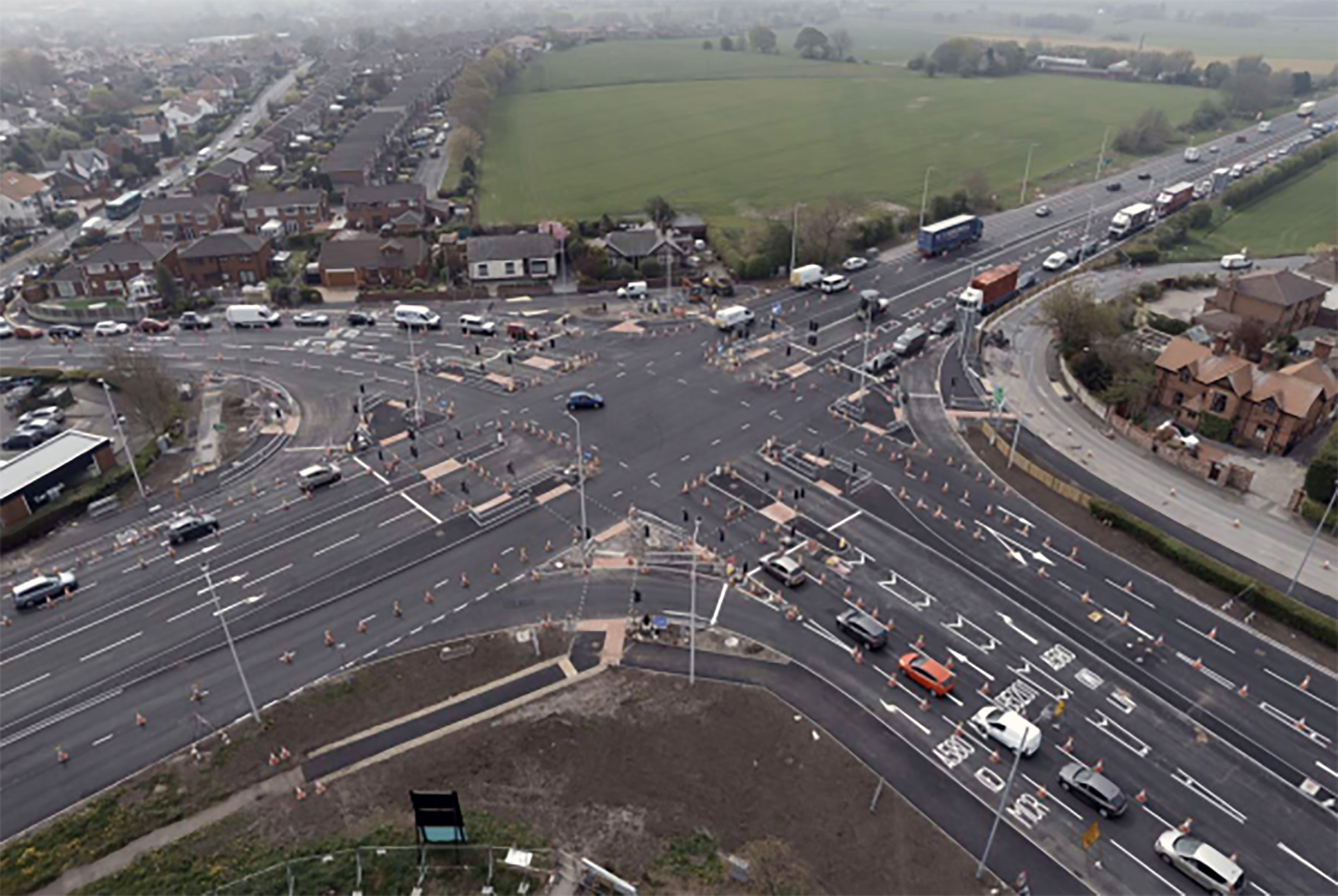Windle Island is one of Merseyside’s busiest roads and is a key strategic point in the Liverpool City Region road network. On a daily basis the junction exceeded capacity, not only leading to high levels of congestion and delays for commuters, but also impacting economic growth and development in the area. St Helens Council identified that the re-alignment of Windle Island junction and the improvement of signalling was key to reducing congestion and creating better journeys for road users.
Working via the SCAPE Civil Engineering framework, we installed:
- Controlled pedestrian and toucan crossings on all arms of the junction
- A segregated right turn lane northbound on the A570
- A new signalised junction and improved slip-road to the southbound A570

As well as relieving congestion, our work at Windle Island has reduced journey times, improved road safety for thousands of motorists, pedestrians and cyclists and improved air quality across the region.
Early contractor engagement delivers cost savings
Working collaboratively with St Helens Council from the early stages of project development enabled our teams to deliver value for money solutions and identify circa. £3.6 million of cost savings at the feasibility stage of the scheme. The savings were achieved through value engineering workshops and rationalising the design whilst maintaining the full functionality of the junction. Via the SCAPE Civil Engineering framework, St Helens Council benefitted from having the flexibility of being able to access a range of NEC contract options. By moving from an NEC Option C form of contract to Option A we were able to fundamentally reduce the overall project programme and complete the scheme 10 weeks ahead of programme.
Leaving a positive legacy
Throughout the duration of the project, our teams looked for opportunities to ensure we left a lasting positive legacy for the local community and contribute to our 2040 sustainability ambition to Positively Impact More than One Million People. Working with a wide range of charities we raised cash for worthy causes, collected clothing and made food-bank donations. We also opened our doors to the public for site tours and worked alongside schools and colleges to provide careers advice and interview techniques.
Reducing our environmental impact
Working towards our ambition to go Beyond Net Zero Carbon by 2040, we utilised solar powered lighting towers to reduce our environmental impact and carbon emissions. As well as omitting zero noise, the use of the towers saved 15 tonnes of C02 and 6,000 litres of diesel that would have been used to power generators required for traditional lighting sources.
students engaged
spend with SMEs
safety record
Exemplar health and safety
The project team were awarded a Considerate Constructors Performance Beyond Compliance award for the excellent safe systems of work adopted on site that resulted in zero lost time safety incidents.